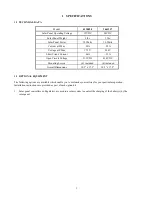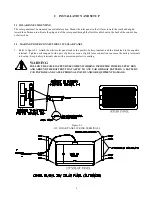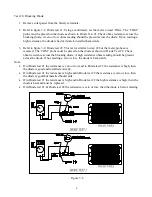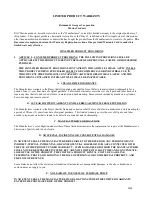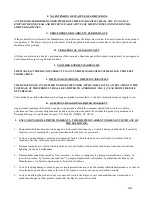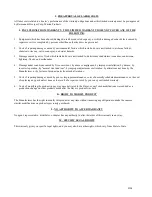
4
3
TROUBLESHOOTING
The following chart is intended to assist with troubleshooting your hydraulic lift. While not all inclusive, the chart outlines
the most common causes of a problem and the recommended course of action.
CAUTION:
IF THE PROBLEM WITH THE SOLAR PANEL IS NOT CERTAIN, ALWAYS FOLLOW THE
MANUFACTURER’S WARRANTY POLICY BEFORE ANY OTHER REPAIR OR
MAINTENANCE IS ATTEMPTED.
WARNING:
NEVER ALLOW ANYBODY TO WORK IN OR ON THE BOAT WHEN IT IS SUSPENDED
ABOVE THE WATER ON THE LIFT.
WARNING:
DO NOT SERVICE THE LIFT WITH YOUR BOAT ON THE LIFT. DO NOT SERVICE THE
HYDRAULIC LIFT WITH LOAD TUBES IN THE RAISED POSITION. DO NOT
DISCONNECT ANY HYDRAULIC LINES UNLESS THE LIFT IS COMPLETELY
LOWERED.
SYMPTOM
CAUSE AND CORRECTIVE ACTION
Battery does not keep a charge.
Check the battery fluid levels, age, and time of last booster
charge. The battery must be booster charged at the beginning and
end of the season using a 10A charger.
Verify solar panel or AC charger is plugged in correctly.
Check the voltage output of the solar panel. With solar panel
unplugged, output should be about 14-18 volts (12V solar panel)
or 28-36 volts (24V solar panel) when exposed to light.
Verify that the polarity (positive or negative) of the solar panel
matches the battery’s polarity.
Battery terminal becomes hot.
Verify cable is clean and tight on battery terminal
Solar Panel- no output.
Verify that the solar panel gets an adequate amount of light and
the lift usage is within the monthly seasonal limits. The solar
panel may be mounted up to 50 feet away from the battery if
necessary.
Verify the solar panel has a voltage output. Unplug solar panel
and check voltage at plug with voltmeter. The voltage should be
between 17-21V (12V panel) or 34-42V (24V panel) in direct
sunlight. If not, the solar panel, cable or diode could be damaged.


